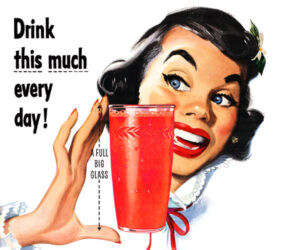
One of the more popular (and relevant) memes circulating today is the phrase “don’t drink the Kool-Aid!” which is an historically inaccurate reference to the cyanide-laced grape Flavor Aid brand drink that Jim Jones had conditioned his cult followers to take in November 1978. Fortunately for the makers of Flavor Aid, “Kool-Aid” is the meme that sticks. Technically, the event is listed as a “murder-suicide” because some were forced to drink and some were shot but the majority of the 918 dead took the poisoned brew willingly.
They had been conditioned to do so after months of disinformation and practice drills.
We can easily miss the lesson here by smugly believing that we would never be such a fanatical follower but there is a Kool-Aid that too many regular folks gleefully guzzle: Apocalypticism – the fervid belief that the end of the world is inevitable and always right around the corner. Though primarily a religious phenomenon, there is plenty secular Apocalypticism to go around.
Certainly we live in perilous times, but that truth is far from the belief in the total breakdown and destruction of civilization. This Apocalyptic faith arises from a combination of a distorted focus on sensational negative news bias, catastrophizing and unwarranted assumptions about human behavior.
According to Psychology Today, the impact of constant “exposure to consistent, sensationalized pessimism and negativity” has a distorting impact on our perception, thinking and mental health. Sensational, negative news is immensely profitable to corporate media outlets and so it makes up a disproportionate amount of their programming giving us a false impression of what is going on in the world. While it is true that genuine catastrophes exist throughout the world, it is not true that there is widespread global chaos. What is true however is that humans have leveraged ever-evolving technologies to address and improve many of our most persistent problems and that life today is far better for more people than ever before.
Catastrophizing is “a cognitive distortion that prompts people to jump to the worst possible conclusion, usually with very limited information or objective reason to despair.” It is the certitude we feel when, prompted by negative news and marketing, we imagine a catastrophic outcome is not only likely but inevitable. And such thinking is profitably encouraged by the growing Prepper Industry which now has its own promotional expos.
Apocalypticism also involves (sometimes religiously inspired) negative assumptions about human behavior and dogmatic assertions about “human nature.” No doubt we regularly see media examples of terrible human behavior but most people do not experience or display such behavior. Negative assumptions about our own species enable our catastrophizing and lead us to imagine catastrophes that provoke a widespread surrender to barbarism and chaos.
Let’s face it. The biggest threats to human survival and ongoing progress come from a very few hubs of power and influence and the fear and greed that motivates them. We know what we need to do and, in spite off their resistance, we are doing it. Will disasters still happen? Of course, but if we refuse to drink the deadly Kool-Aid of Apocalypticsm we can be confident of our ability to survive and thrive.
